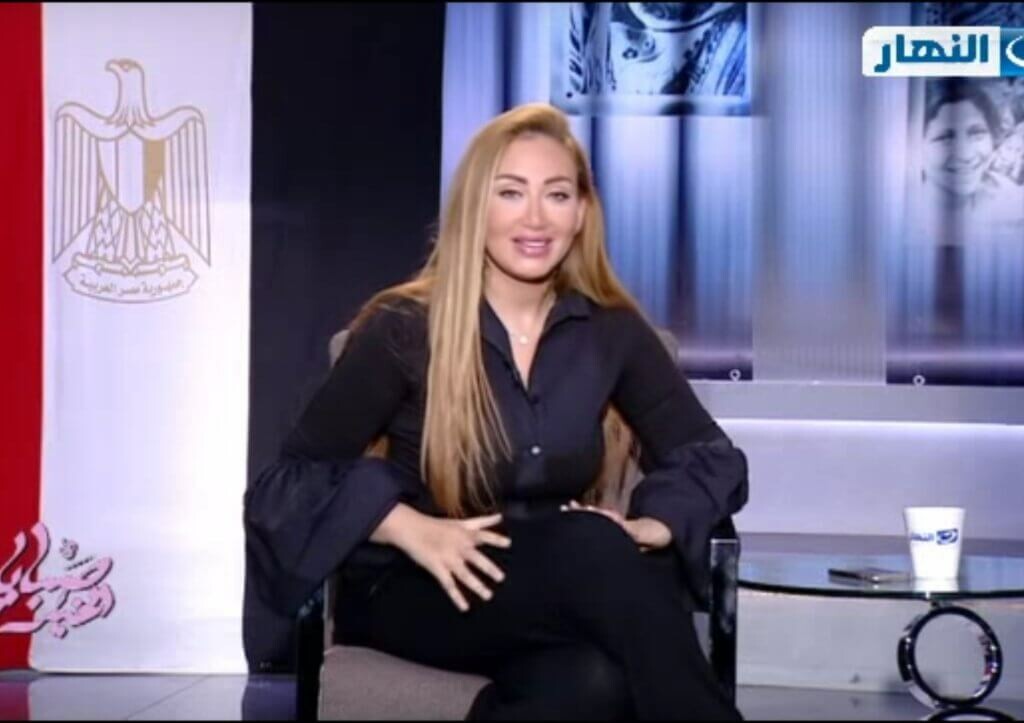Riham Said, an Egyptian journalist, created a historic moment on television by removing her veil during an interview with cleric Yousuf Badri. Her gesture sparked an intense debate about personal freedom, female autonomy, and the role of the media in monitoring influential religious figures. This incident marked a milestone in the fight for free expression.
Egyptian Journalist Revives Debate on Religious Freedom by Removing Veil on Live TV
To begin, it is crucial to understand the context in which one of the most controversial moments in recent Egyptian media history occurred.
Journalist Riham Said, known for addressing sensitive issues in Egyptian society, was at the center of an event that divided public opinion: she removed her veil during a live interview with the influential cleric Yousuf Badri.
This incident, broadcast on Al-Nahar TV, ignited a public discussion about female autonomy, the transparency of religious leaders, and the responsibility of the media.
An Unexpected On-Air Challenge
The exchange began on a tense note when Badri, known for his conservative positions, demanded that Said cover her head before entering the studio. According to the journalist herself, the cleric had displayed an ambiguous stance off-camera, agreeing to speak with her without the veil.
However, once the studio lights were on, his insistence on strictly adhering to the Islamic dress code set the tone for the conversation. Said initially decided to wear the scarf but made it clear she was doing so out of personal conviction and not due to the opinions of her guest.
Points of Contention Regarding the Veil
The controversy escalated when the host posed questions about alleged cases of sexual harassment by some religious figures who offered exorcism services to Muslim women.
Badri avoided delving into the subject, and tensions rose. As the discussion grew more heated, Said chose to remove her veil on camera, arguing that she could not continue the “charade” of wearing it solely to appease her guest. The gesture was met with a mix of astonishment and admiration from the audience, although it also drew criticism from more orthodox sectors.
Cleric and Journalist Under Scrutiny
The cleric’s discomfort increased when the host revealed that the network had paid him 1,000 Egyptian pounds for his appearance on the show.
According to Said, the payment should not be used to restrict editorial freedom or intimidate journalists with legal threats. Badri, visibly upset, demanded an immediate change in tone and threatened to take action against the network. This clash extended beyond the studio and entered the public arena, where supporters of both sides began debating on social media about the validity of each position.
Nonetheless, the incident sparked a wide range of comments on Twitter, Facebook, and online forums. Many users praised Said’s courage in exposing what they viewed as the “double standards” of certain religious leaders. Meanwhile, others criticized her decision to remove the veil on air, arguing that it could be seen as disrespectful to the cultural norms of many practicing Muslims.
Even so, the journalist’s action became a symbol of resistance against media pressure and the implicit censorship that often characterizes interviews with spiritual authorities.
Double Standards and Freedom of Expression
Meanwhile, experts from academic institutions, such as the prestigious Al-Azhar University, argue that the veil is a deeply personal matter that should be respected. Some moderate religious leaders have emphasized the importance of constructive dialogue, highlighting that discussions about religion and national identity should allow for open and unthreatened exchanges of ideas.
Freedom of expression not only protects the journalist’s right to question but also ensures the audience’s right to learn about the realities behind the scenes. These statements reinforce the idea that Egyptian society is at a crossroads, trying to reconcile tradition with the pursuit of individual rights.
Similarly, Said and Badri’s episode seems to have opened the door to a broader debate about the role of the media in monitoring religious figures with massive influence.
Various journalists have expressed solidarity with the host, arguing that the interference of spiritual leaders in a program’s editorial line undermines journalistic independence. At the same time, the controversy raises questions about the management of public image on television and the need for networks to promote open and honest exchanges.
A Debate for the Future
Finally, Riham Said’s decision to remove her veil in front of a fundamentalist cleric not only represents a turning point in the relationship between the press and religious authority in Egypt but also raises broader questions about personal freedom, women’s representation, and journalistic objectivity.
The challenge for the media lies in finding a balance between respecting religious beliefs and defending free expression. Any attempt to censor or condition journalists’ voices weakens public trust in information, deepening societal divides.
Ultimately, the impact of this incident extends beyond the television set, exposing how cultural pressure and strict interpretations of religion can clash with many professionals’ intent to inform without constraints.
Said’s courage in removing the veil live, despite the risk of harsh criticism, symbolizes the pursuit of a journalistic practice unafraid to question figures often deemed untouchable. Regardless of the controversy, the conversation sparked by this televised moment has the potential to encourage deeper reflection on women’s rights, freedom of expression, and the transparency of religious leaders.
Master Ruada — News on – Egypt, Television Programs





